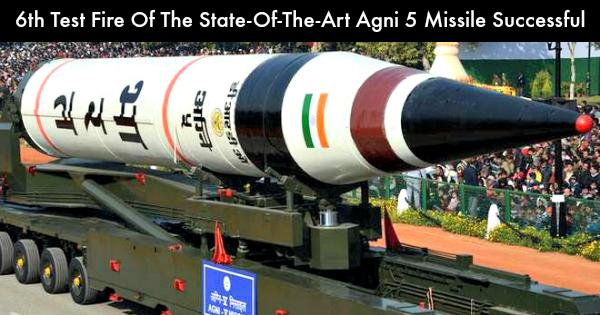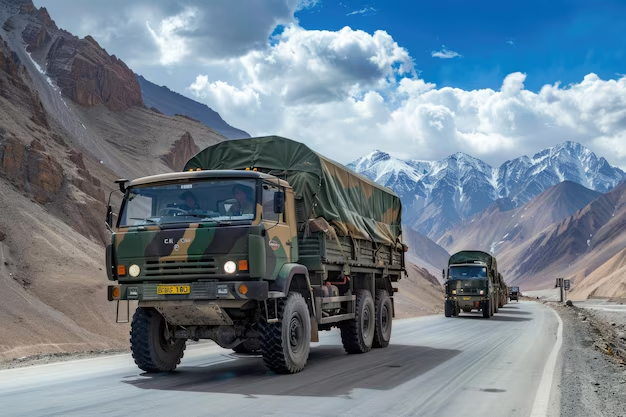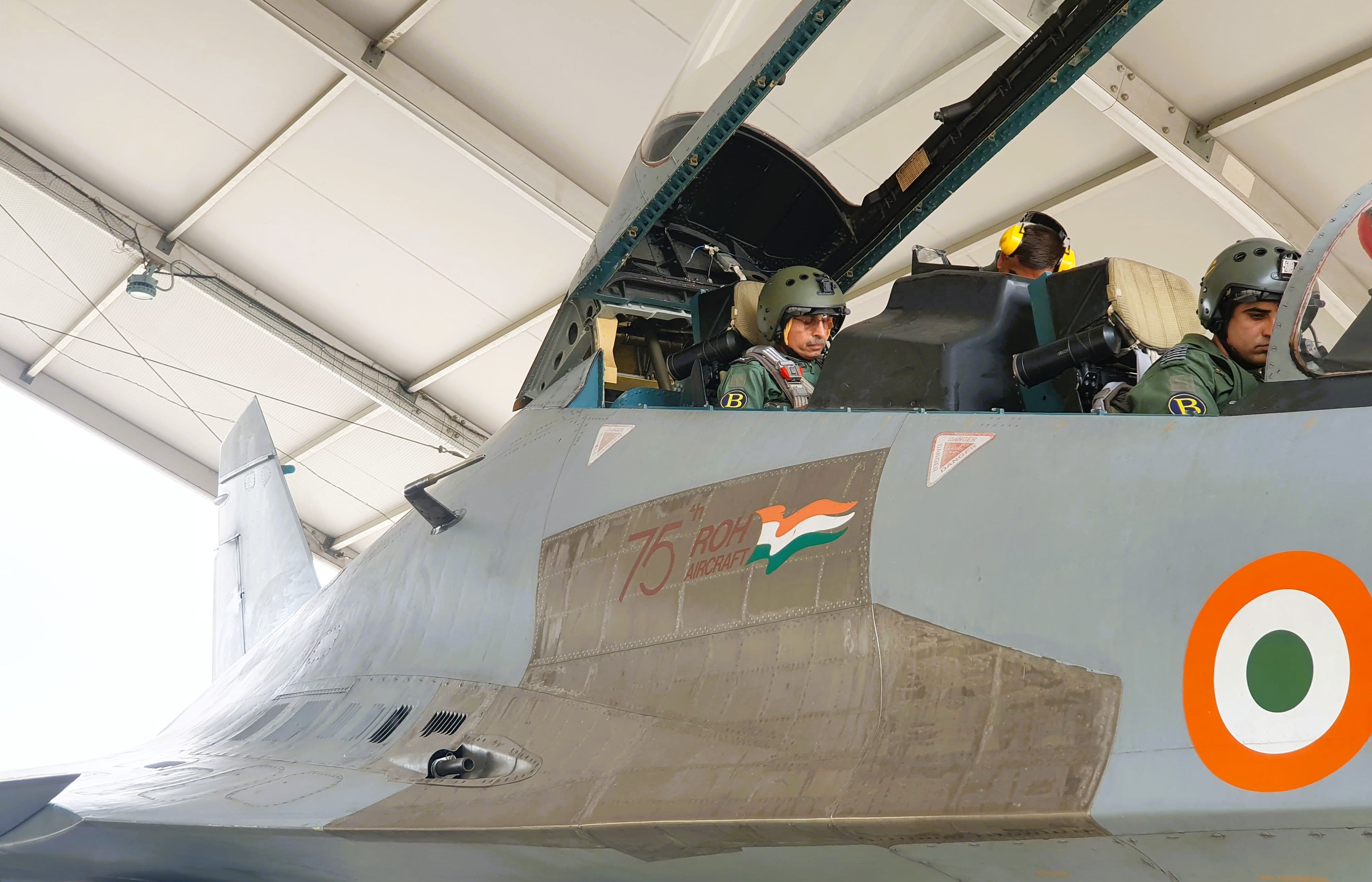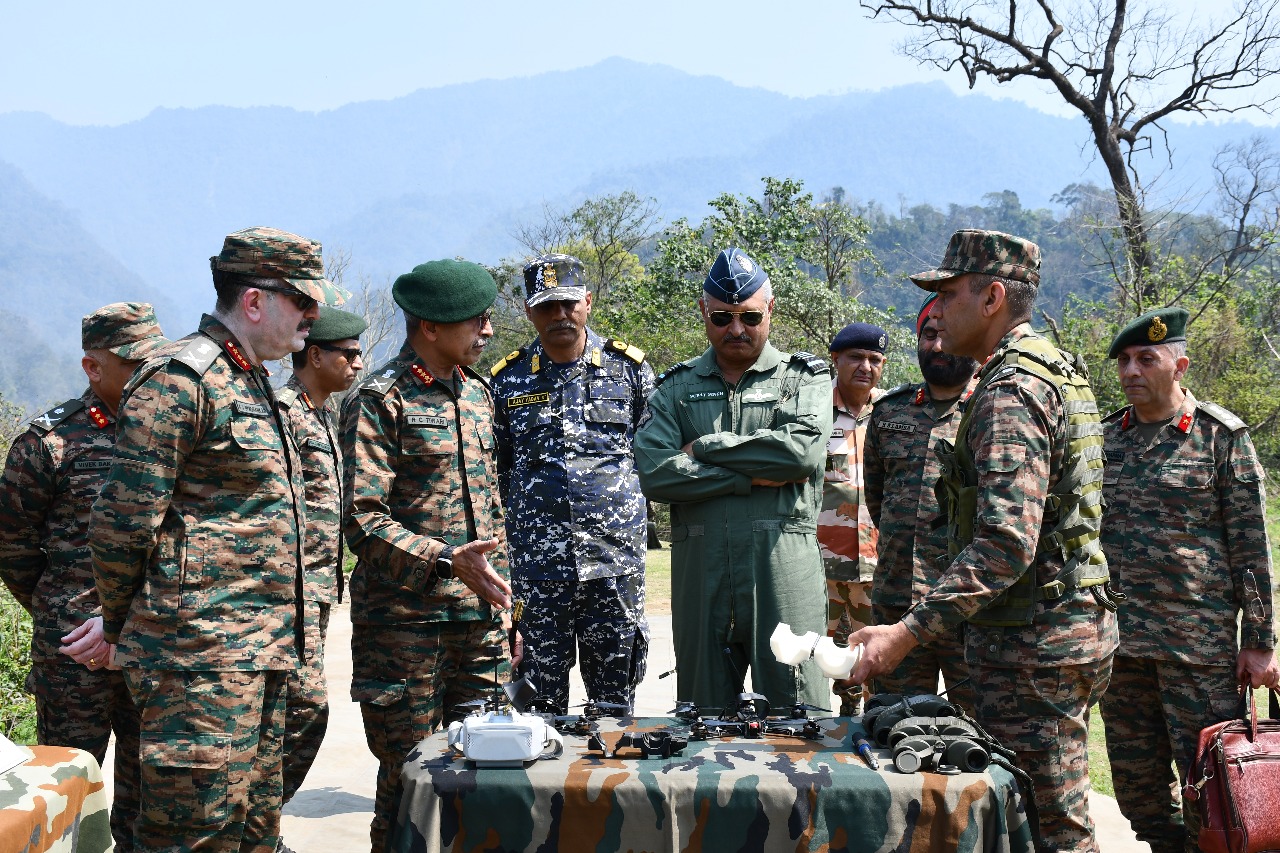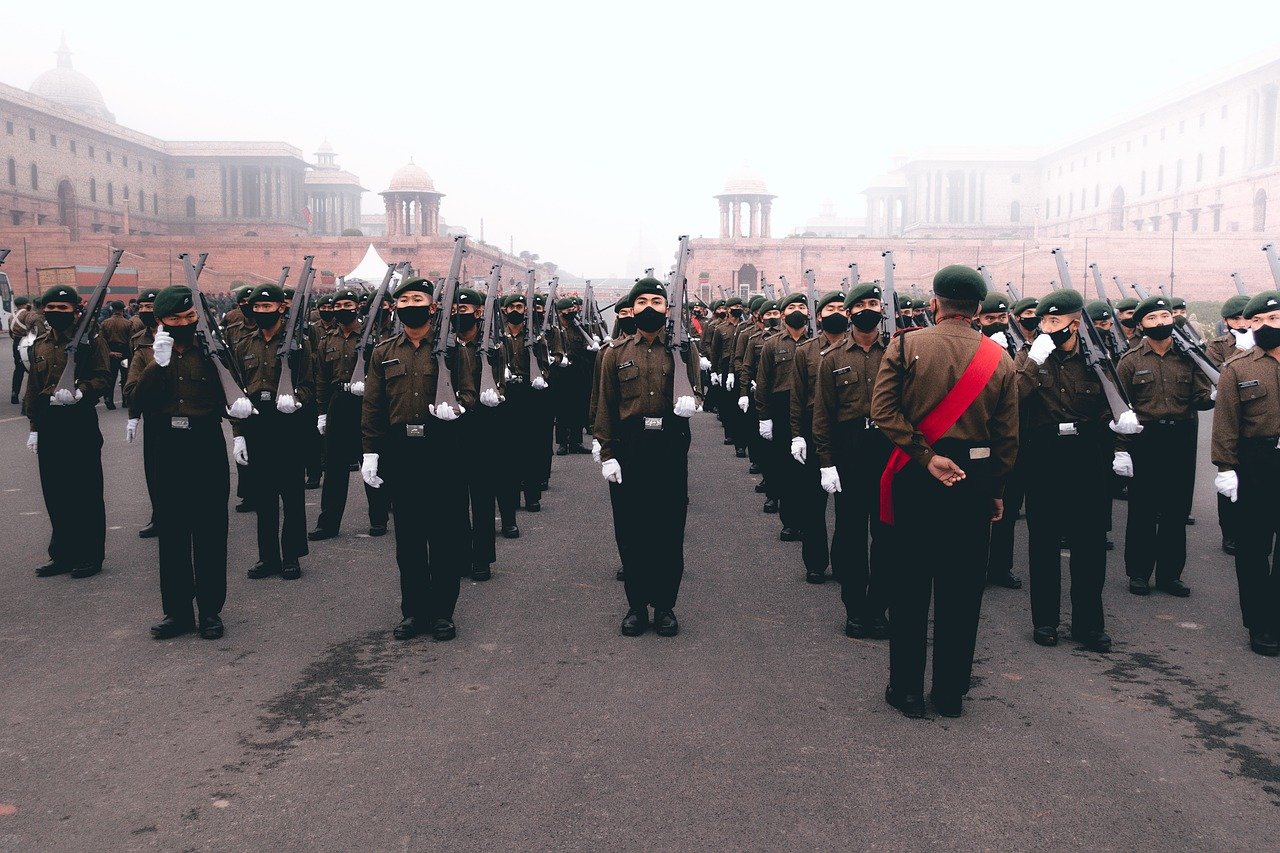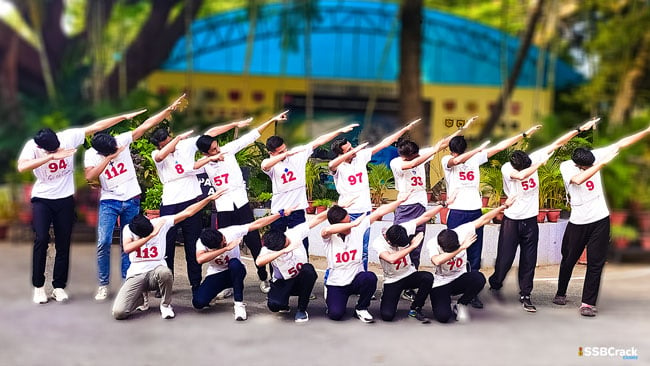India recently test-fired its indigenously developed nuclear-capable Long Range Ballistic Missile Agni-5 successfully. This was the sixth trial of the state-of-the-art Agni-5.
The missile was launched at Integrated Test Range (ITR) at Dr Abdul Kalam Island in the Bay of Bengal near Odisha. The missile covered its full distance during the trial which was a total success.
The flight performance of the missile was tracked and monitored by radars, tracking instruments and observation stations all through the mission.
About Agni V
Unlike other missiles of the series, Agni-5 is the most advanced with new technologies in terms of navigation and guidance, warhead and engine.
Agni V is a three-stage, 17-metre tall, 2-metre wide. It is capable of carrying a nuclear warhead of about 1.5 tonnes. The missile also has higher reliability, longer shelf life, less maintenance and enhanced mobility.
Many new technologies developed indigenously were successfully tested in this trial. Navigation systems, very high accuracy Ring Laser Gyro based Inertial Navigation System (RINS) and the most modern and accurate Micro Navigation System (MINS) had ensured the missile reached the target point within few meters of accuracy.
The surface-to-surface Agni V missile has a strike range of 5,000 km.
Complex Trajectory
The missile has been programmed in such a way that after reaching the peak of its trajectory, it will turn towards the earth and continue its journey towards the intended target with an increased speed due to the attraction of earth’s gravitational pull. The path has been precisely directed by the advanced on-board computer and inertial navigation system.
As the missile enters the earth’s atmosphere, the atmospheric air rubbing the skin of the missile during the re-entry phase raises the temperature beyond 4,000 degrees Celsius.
However, the indigenously designed and developed carbon-carbon composite heat shield continues to burn sacrificially, protecting the payload and maintaining the inside temperature below 50 degrees Celsius.
Also Read: Difference Between Ballistic and Cruise Missile
Finally, commanded by the on-board computer, the missile hit the designated target point accurately.
Earlier Tests
The first test of Agni-5 was conducted on April 19, 2012, the second on September 15, 2013, the third on January 31, 2015 and fourth on December 26, 2016. The last test was held on January 18, 2018.
All the five earlier trials were successful.
At present, apart from the Agni-5, other Agni missiles that India has in its armoury are: Agni-1 with a 700-km range, Agni-2 with a 2,000-km range, Agni-3 and Agni-4 with 2,500 km to more than 3,500 km range.
After some few more trials, Agni-5 will be inducted into the services.

